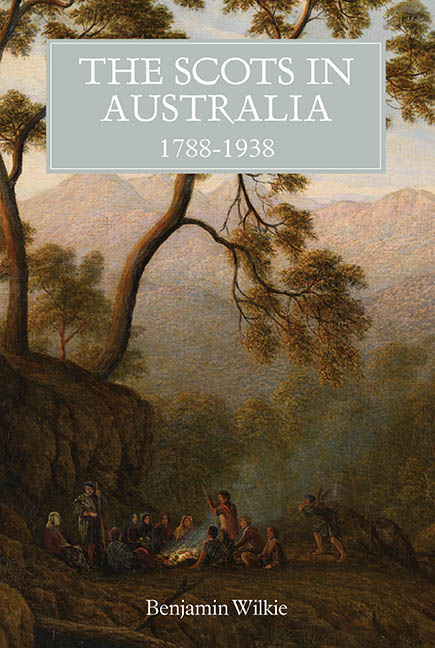Book contents
- Frontmatter
- Contents
- Illustrations
- Acknowledgements
- Abbreviations
- Introduction
- 1 From Scotland to Australia: Convicts, Free Settlers, and Encounters with Australia
- 2 Caledonia Australis: Imperial Commerce, Migrant Networks, and Australian Pastoralism
- 3 Scottish Migrants and Indigenous Australians
- 4 Imagining Home: Scottish Culture in Australia
- 5 Warriors of Empire: A Case Study of Popular Imperialism
- 6 The Empire Builders: Imperial Commerce and Migration between the Wars
- 7 New Scots: Industry, Settlement, and Working-Class Migration
- 8 At The Edge of Scotland's Diaspora: Diversity and Tension in the Twentieth Century
- Conclusion: The Imperial Legacy
- Bibliography
- Index
Conclusion: The Imperial Legacy
Published online by Cambridge University Press: 23 August 2019
- Frontmatter
- Contents
- Illustrations
- Acknowledgements
- Abbreviations
- Introduction
- 1 From Scotland to Australia: Convicts, Free Settlers, and Encounters with Australia
- 2 Caledonia Australis: Imperial Commerce, Migrant Networks, and Australian Pastoralism
- 3 Scottish Migrants and Indigenous Australians
- 4 Imagining Home: Scottish Culture in Australia
- 5 Warriors of Empire: A Case Study of Popular Imperialism
- 6 The Empire Builders: Imperial Commerce and Migration between the Wars
- 7 New Scots: Industry, Settlement, and Working-Class Migration
- 8 At The Edge of Scotland's Diaspora: Diversity and Tension in the Twentieth Century
- Conclusion: The Imperial Legacy
- Bibliography
- Index
Summary
From the middle of the nineteenth century, dominant ideas about Scottishness in Australia had their basis in the experience of, and material benefits derived from, the British Empire. Yet this representation of Scots and Scotland was increas¬ingly distant from the realities of home, and indeed of Scottish-Australia. The poet Henry Lawson, who once praised the statue of Robert Burns in Ballarat in 1887, was writing in the Bulletin in 1905 – after having witnessed the unveiling of a Burns statue in Sydney – that those ‘tall-hatted and frock-coated’ people in attendance were ‘frauds’ and ‘fly-dirt on the pages’ of Burns’ poetry; they were nothing but ‘crawlers round the bardie's name’. It was a scathing criticism of what Lawson saw as the excesses and absurdities of popular Scottish culture in Australia.
Thirty years on, and the disjunction between diasporic culture and Scotland itself had further widened. The working class had become enfranchised and the Labour party had unseated the Liberal party in Scotland. The once-powerful economy was in decline and popular imperialism had faded. By the 1920s, Scotland had urban¬ised but was losing its population as unemployment rose and severe overcrowding plagued cities. Increasingly, the Scottish-born in Australia were members of the urban industrial working class, not all were Protestant or Empire loyalists, not all were of Anglo-Saxon or Anglo-Celtic ethnicity, and not all were believers in the ideals of middle-class individualism.
In some ways, however, Australia was always the stage for struggles over Scottish culture and belonging to the diaspora. Free settler and convict labourer; Lowlander and Highlander; Protestant and Catholic; individualist and collectivist; capital and labour. The Scottish diaspora has always been socially, culturally, and politically heterogeneous, yet manifestations of Scottish culture have not always reflected this. In large part, the fabric of Scottish identity in Australia did not encompass outsiders, although they were embodied by Sir Walter Scott's ‘man, with soul so dead, / Who never to himself hath said, / This is my own, my native land’. Such a ‘wretch’, mused Scott, would ‘go down / To the vile dust, from whence he sprung, / Unwept, unhonour'd, and unsung.’ While such a large group of migrants and their descendants must necessarily be diverse, the subtleties and nuances of the Scottish diaspora and representations of its homeland are often overshadowed by precisely the same stereotypes found in nineteenth- and early twentieth century idealisations of imperial Scottishness.
- Type
- Chapter
- Information
- The Scots in Australia, 1788–1938 , pp. 159 - 164Publisher: Boydell & BrewerPrint publication year: 2017

